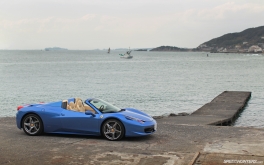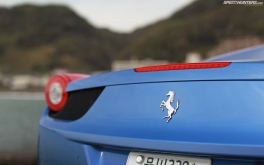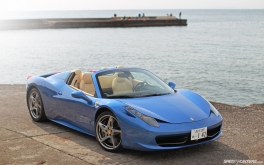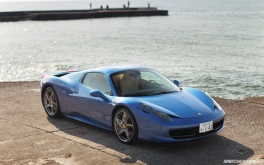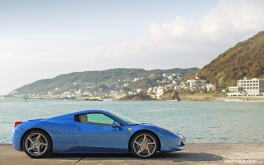
This is it right here. This is the part of my job that I love the most. Contrary to what a lot of people might think, we Speedhunters usually spend more of our time stuck in front of computer screens than we do behind our cameras covering events, featuring cars or hunting speed – in all its forms – during our travels. There’s an awful lot of organizing, emailing, and phone calling in this job, and that’s before we even get to the picture cataloguing, color grading, setting up posts and actually writing. But as tedious as it may all get at times, we are a fortunate group of people who do get to play with some pretty mouthwatering machinery at times. For me it’s always been about the driving. I don’t care what car it is, ever since I got my license I’ve always had the urge to drive as many cars as possible. Over the last decade I’ve had the chance to get behind the wheel of some pretty special rides – everything from affordable Kei cars all the way to exotics and ridiculously powerful tuner cars. But no matter how many cars you sample, there is always one brand that leaves a more lasting impression and I believe I have found the one that does it for me. Actually no, scratch that, my heart has found it – my brain is still processing the experience.
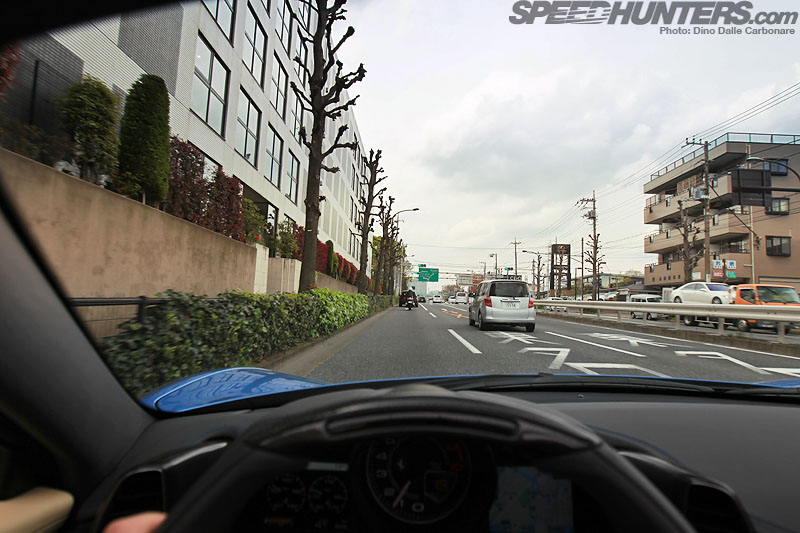
It was a few weeks ago that the people at Ferrari Japan threw me the keys to a brand new 458 Spider. Maranello’s mid-engined open top supercar was all mine for three days and there was no way in hell I was going to waste any potential seat time. I initially took some time to slowly familiarize myself with the car, spending the first day cruising around the streets of Tokyo, slowly getting used the 458’s character, the engine, the dual-clutch transmission and, of course, its various driving modes. Modern performance cars these days are impressively-useable on a day-to-day basis and the 458 is no different – it even has an idling stop feature as standard equipment in the Japanese market. I found this more surprising than what actually happens when you floor the throttle and allow the revs go above grandad-cruising mode. How could such a powerful and brutally responsive naturally aspirated engine be such a pussycat around town!? I was left to ponder over this for the first night; impressed at the hidden talents the Spider seemed to possess. But with a new day came the need for further exploration and this called for an escape from the city…
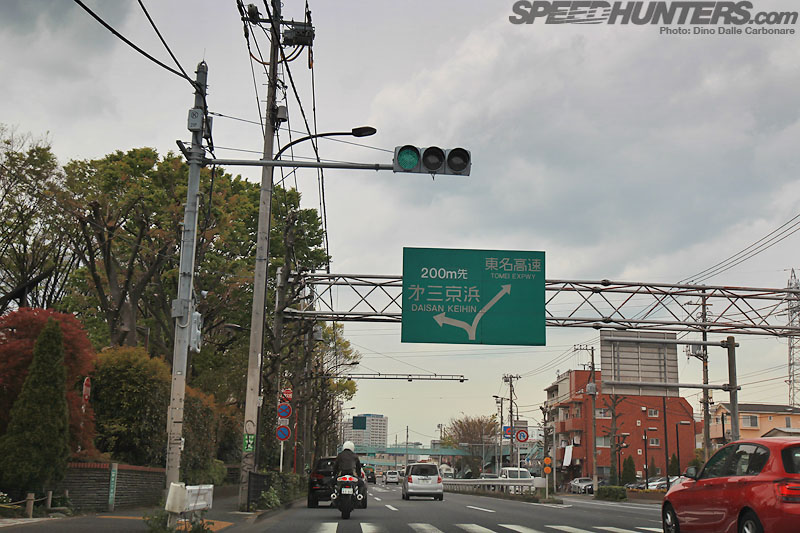
… it was time for a Dream Drive. My destination was to be first Kamakura and then Hayama…

… a little seaside town down by the coast along the Miura Peninsula. After getting up at the crack of dawn to finish a story, the wife and I jumped on board the Azzurro Monaco Spider, put the roof down, and headed out on to a street that to Speedhunters readers should be pretty familiar by now – the Kanpachi-dori. Not too long after joining the road we would be taking the turn off onto the Daisan Keihin expressway…
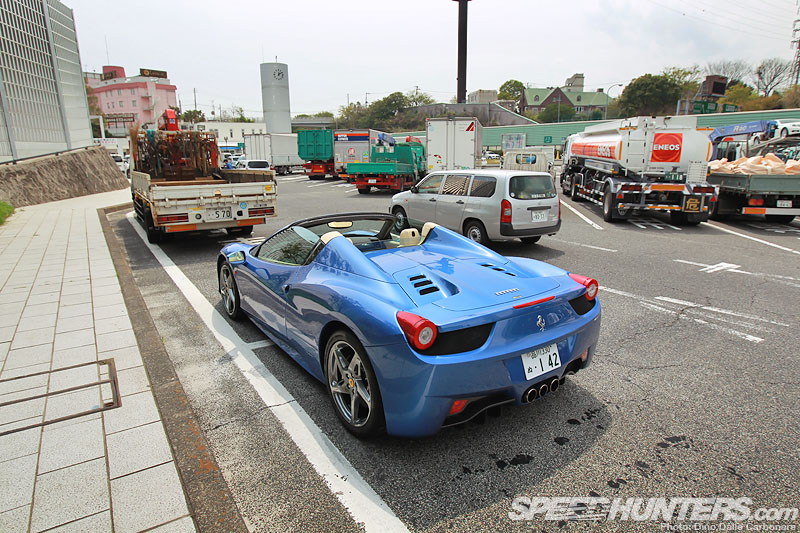
… which would be pointing us towards our general direction; past the Tsuzuki and Kohoku areas of Yokohama and down towards the coast. Not wanting to miss an opportunity for as many shots as I could possibly get on the day I ended up stopping about 15 minutes into the journey. Overenthusiasm? Perhaps. But I just wanted to start snapping away…
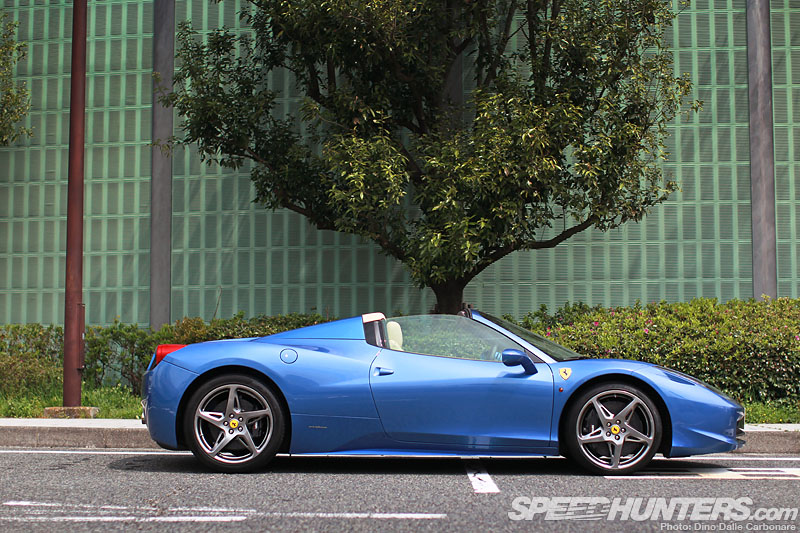
… and start seeing how the light played with the metallic pearl of the $10,000 color option. But as interesting as Japanese highway rest stops may be during the night, at daytime they are overflowing with stinky trucks and commercial vehicles of every type. Time to get going again!
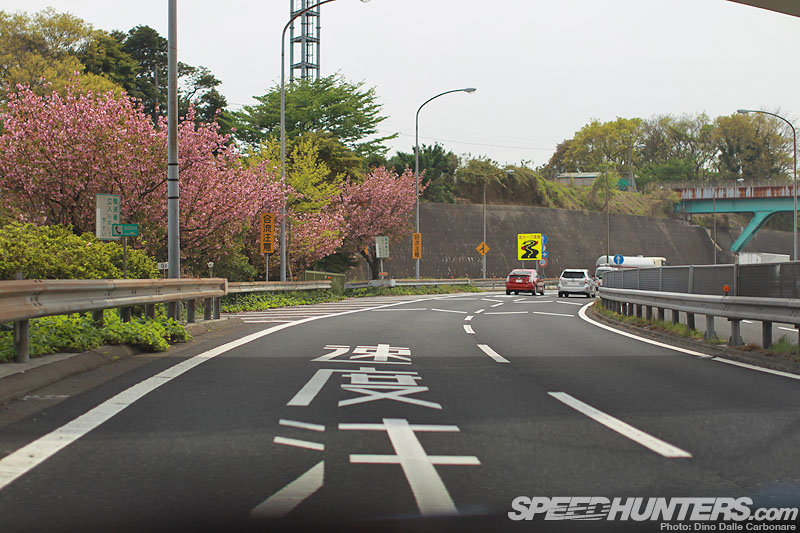
From the end of the Daisan Keihin one of the most complicated toll road networks in Kanto begins. I can’t even remember how many times I have screwed up here in the past…
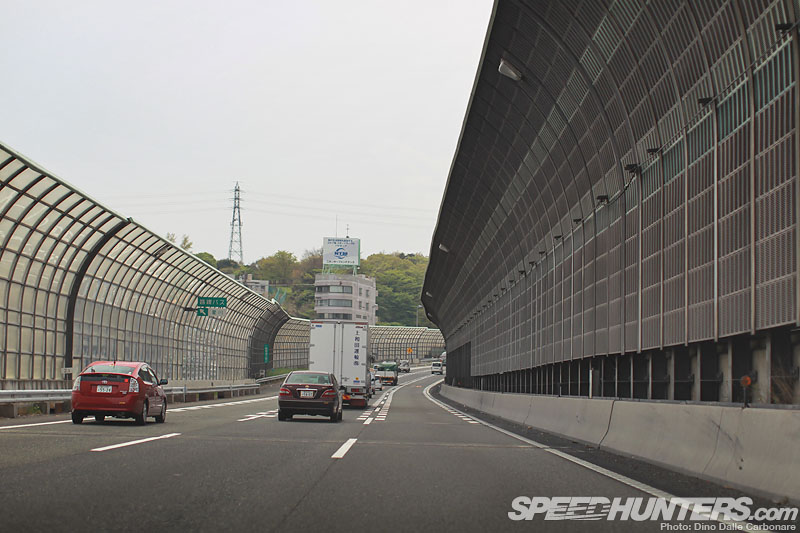
… but after lots of mistakes I think I have it sussed – most times anyways. The idea is to follow directions towards Yokosuka, a big portal town down on the same peninsula and home to a very large American Navy base. Because this stretch of the Yokohama Shindo passes through a lot of built-up areas most of it has tall sound absorbing barriers on each side to help mute traffic noises.
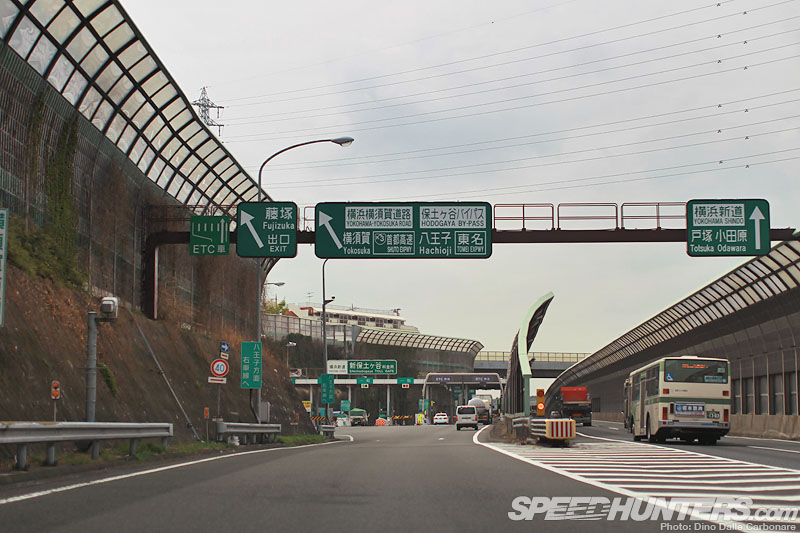
After a while the road splits, and here I pointed the Ferrari left towards the Yokohama-Yokosuka Road – more often referred to as the ‘Yoko-yoko’.
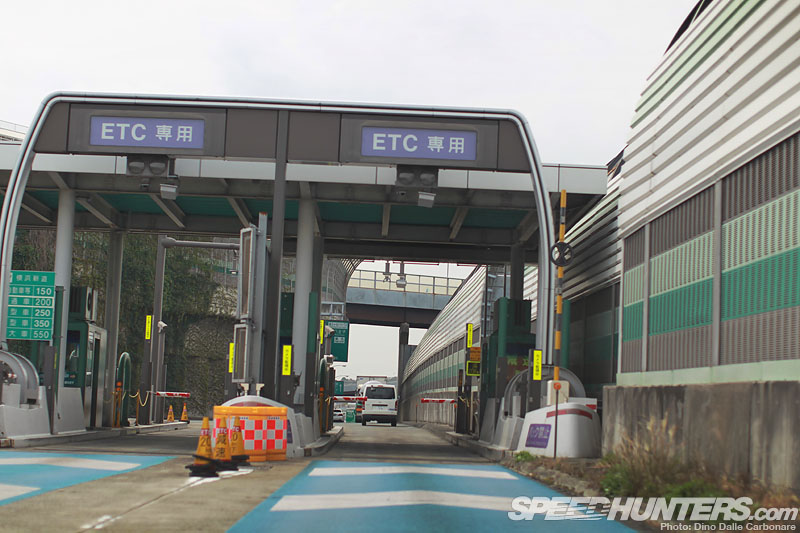
It’s funny how the electronic toll collection (ETC) system works in Japan. Instead of collecting the total charge at a tollgate when you exit the highway, each stretch of road gets its own gate where charges are automatically billed to your ETC card, which is inserted into a little reader inside your car.
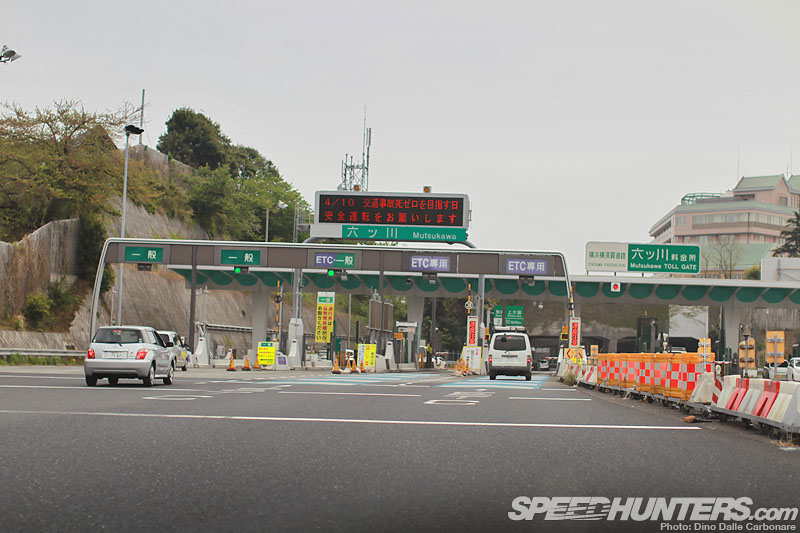
You pass so many of these things that inevitably you even stop bothering to look at how much you are being charged! It’s the Japanese way: just take the unavoidable abuse and look away, quietly.
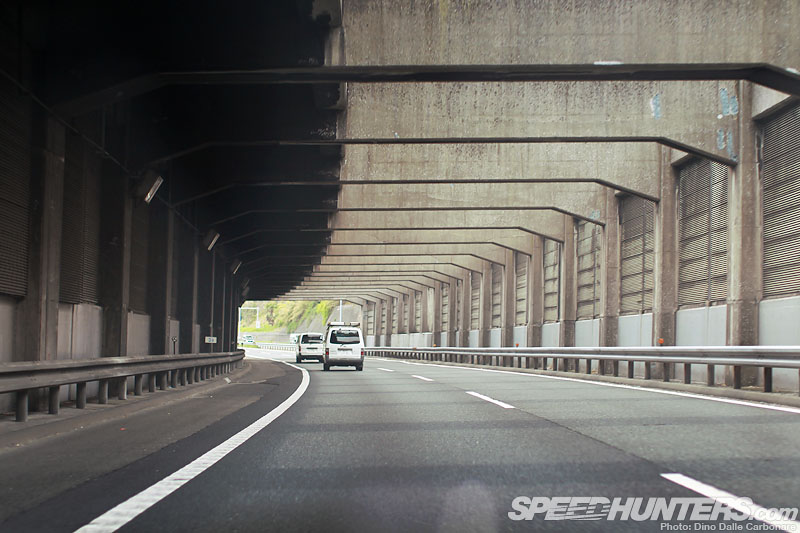
As we made our way deeper into the countryside the traffic began to die down, allowing a little more scope for the occasional squirt of acceleration before the ‘wife unit’ went into license preservation mode and the screaming began.
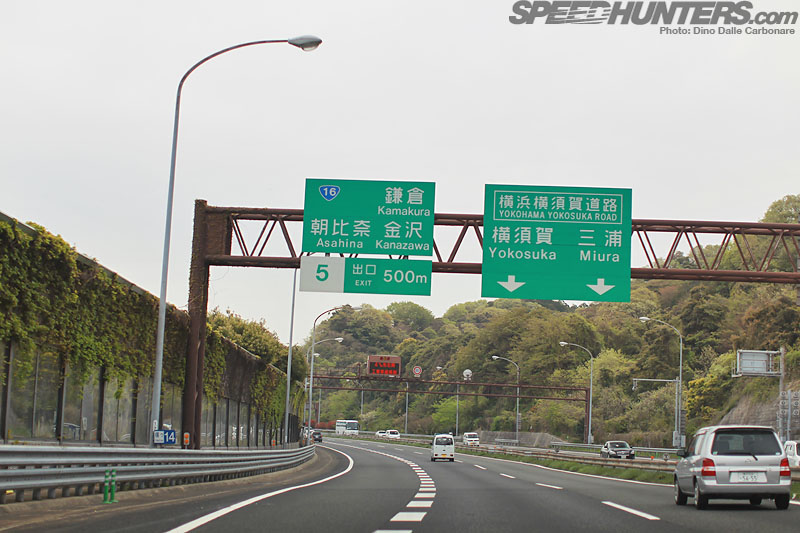
Still, before we reached our exit at Asahina I did manage to dig deeper into that screaming 4.5L V8 behind our heads and let the car communicate through the tighter corners we encountered. Initial impressions were that once you select a more livelier mode on the steering wheel mounted Manettino, the car wakes up, tightens up through each of the controls, and becomes eager to react in a split second to both steering and throttle inputs, and the seven-speed gearbox.
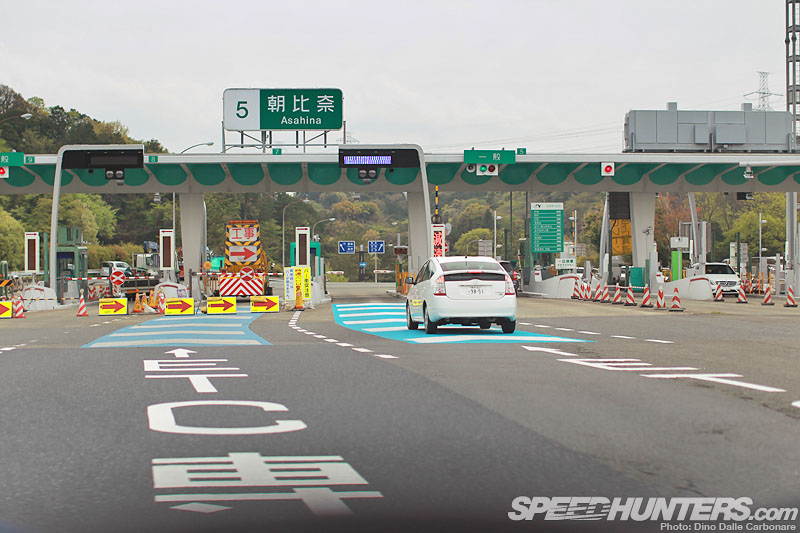
It was now time for some slower roads…
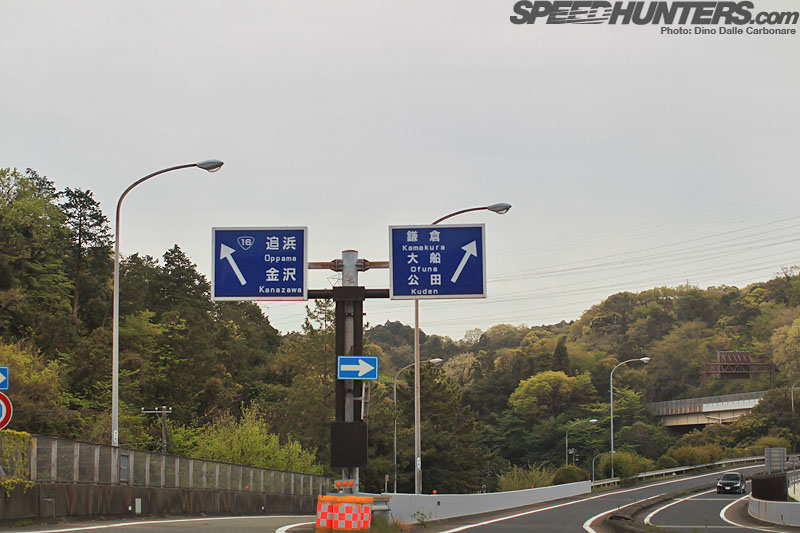
… as we took the right turn after the tollgate towards Kamakura.
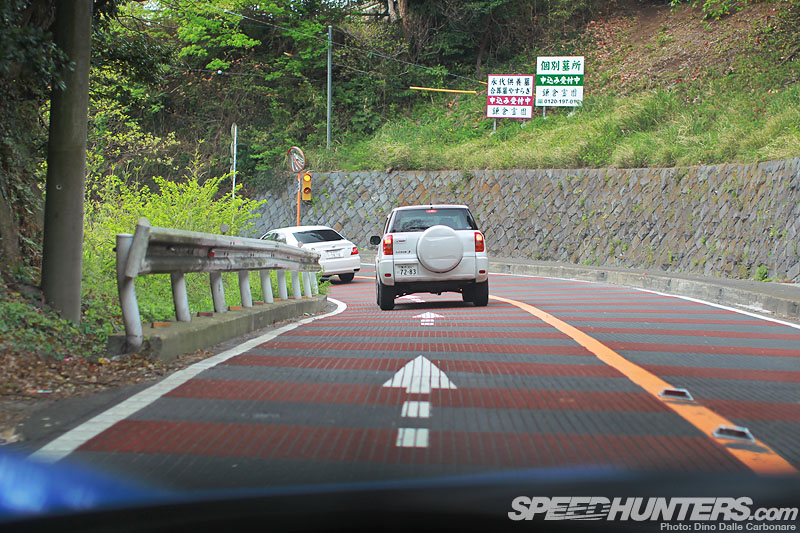
There is a nice little pass over Mt. Rokkokuken before the country road takes you towards the historical part of the town. It’s a tight section with some first gear hairpin bends where you can really stand on the accelerator as you shoot out, feeling that rear end move about a little as the E-diff does it thing to allow you to have some fun and boost your heart rate, but at the same time keep you nice and safe.
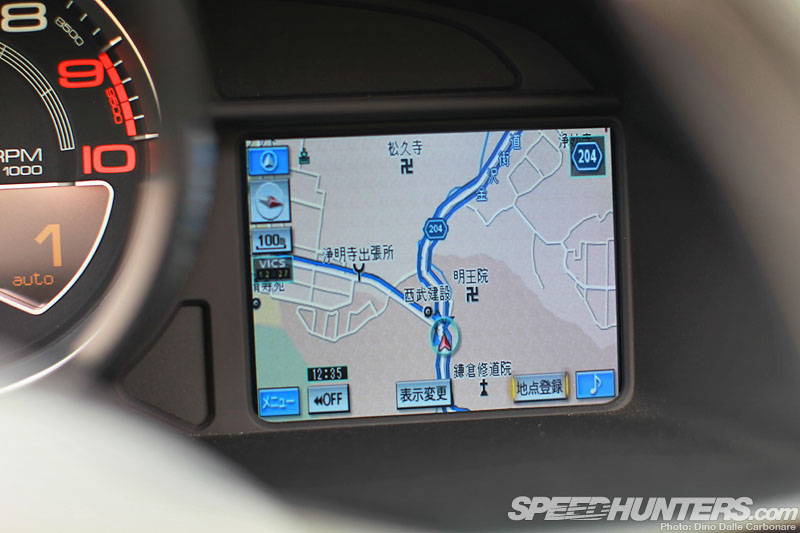
And so we arrived…
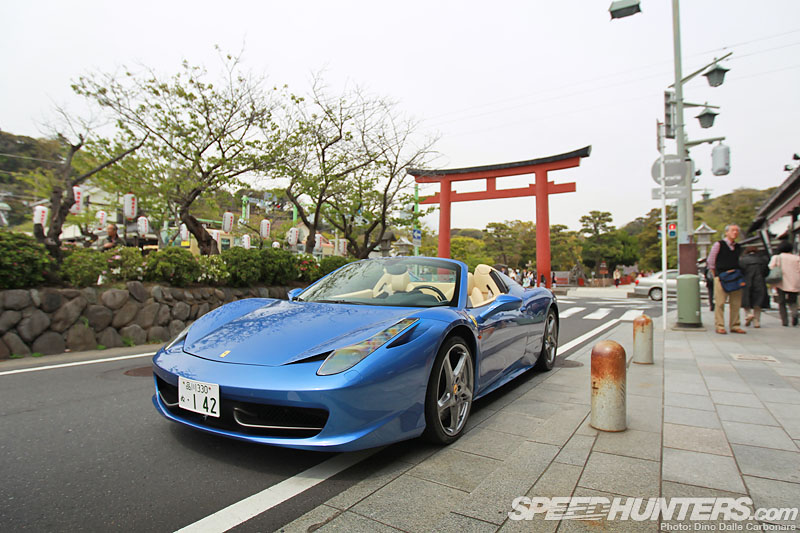
… turning right just as we passed the main entrance to the famous Kamakura temple. Thankfully being a weekday it wasn’t particularly busy so I managed to pull up on the side of the road and grab a couple of shots. Back during the Kamakura-jidai (Kamakura period) which spanned between 1185 and 1333 this used to be the capital of Japan. Kamakura is also the home to the Daibutsu – or Great Buddha – a large bronze statue of Amida Buddha, and is a must-see if you are visiting Japan.
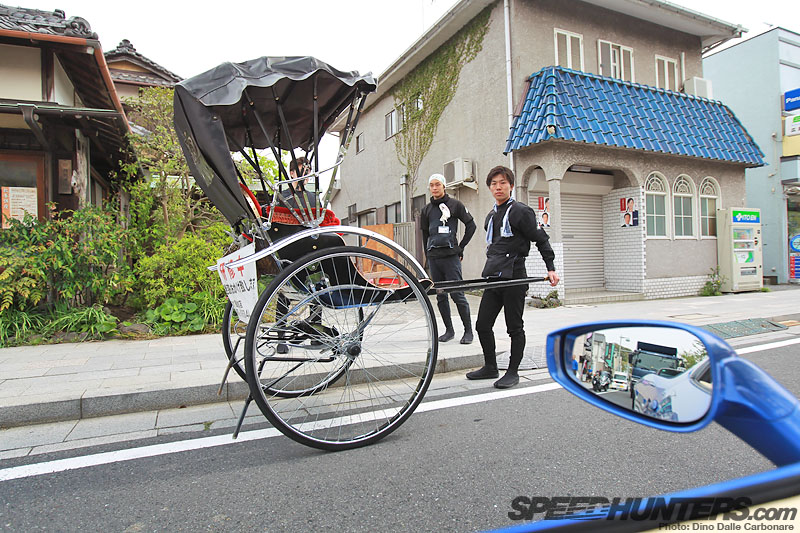
If you want to have a go in a Jinrikisha – or rickshaw – Kamakura is one touristy place you can still find them. I don’t know if these guys were more surprised by the sight of the drop-top 458 or the big gaijin inside behind the wheel! Konnichiwa!
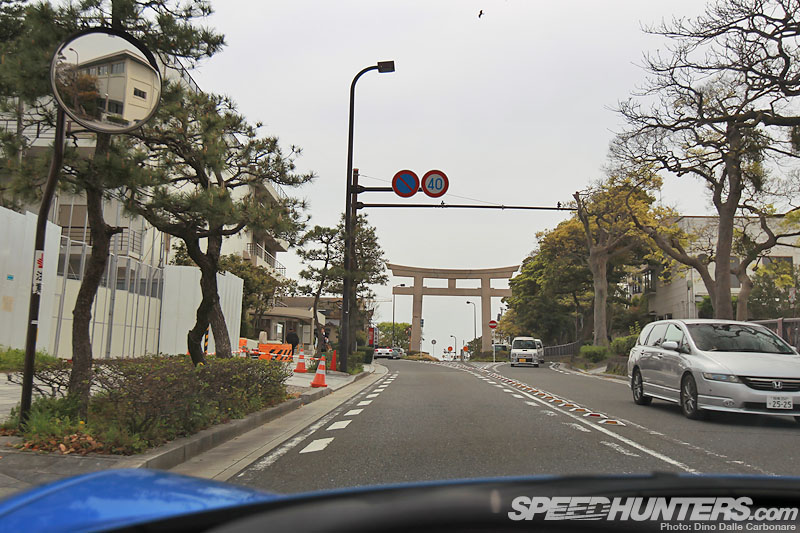
Torii, or temple gates, always mark the entrance to either a temple area or the road towards it. After passing this big concrete one…
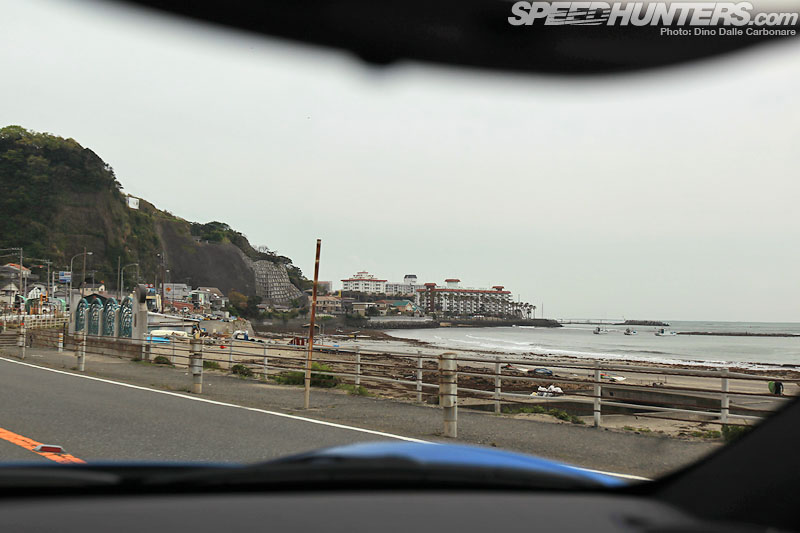
… we were out of the touristy center and onto the costal road that snakes down along the Sagami Bay towards Miura city and then back up the other side of the peninsula towards Yokosuka.
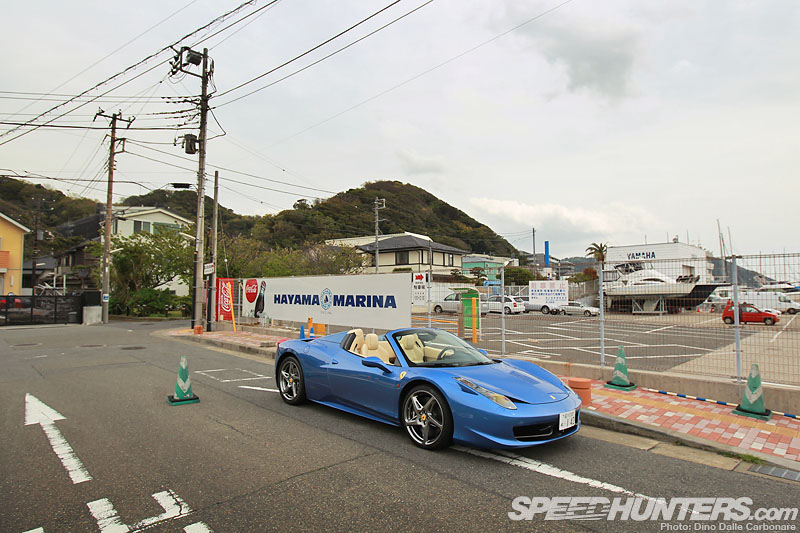
Our first destination was to be Hayama Marina, a quiet little private port which is usually filled to the brim…
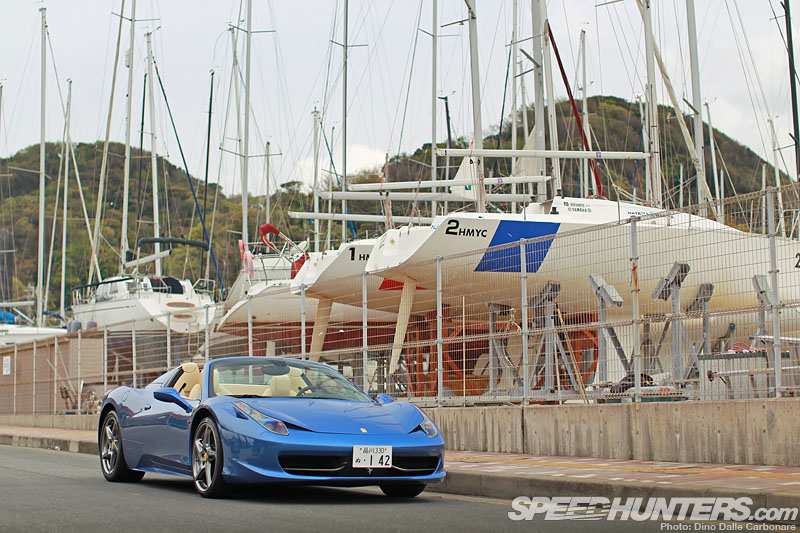
… with sailboats of every size. I thought this would be the perfect spot to grab a few quick shots.
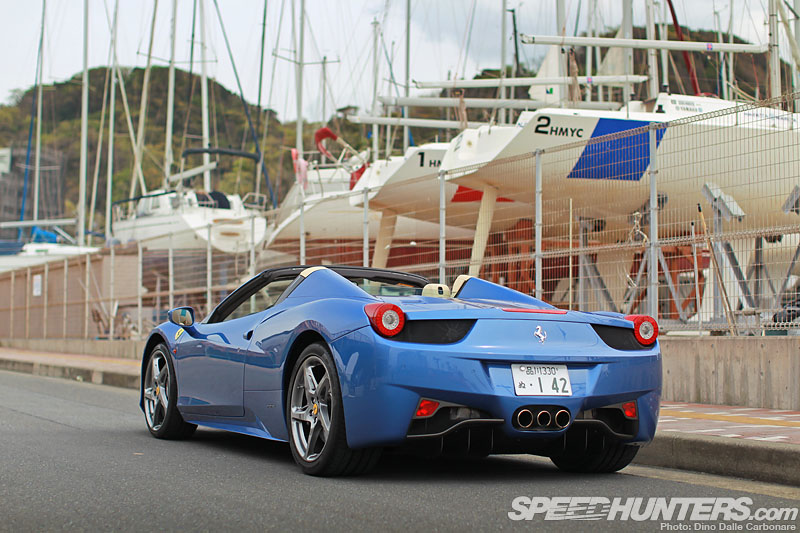
I parked the car along one side of the access road…
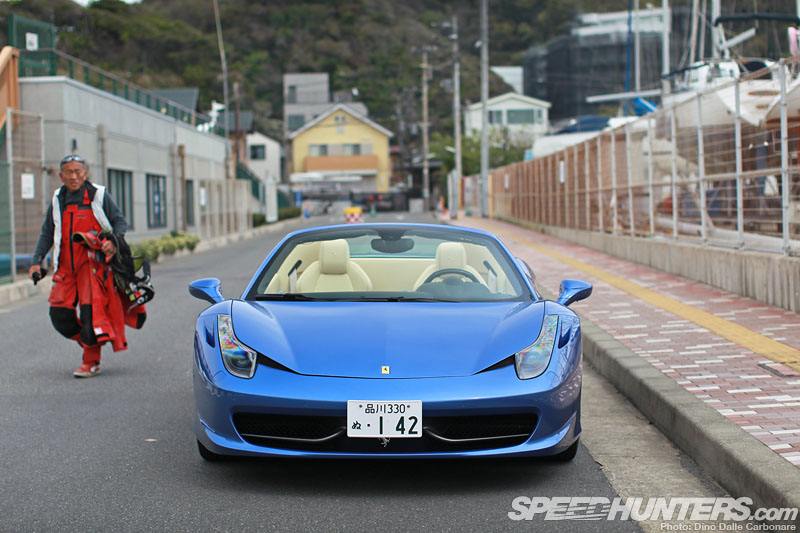
… and let its beauty do the talking. Local fishermen were impressed too!
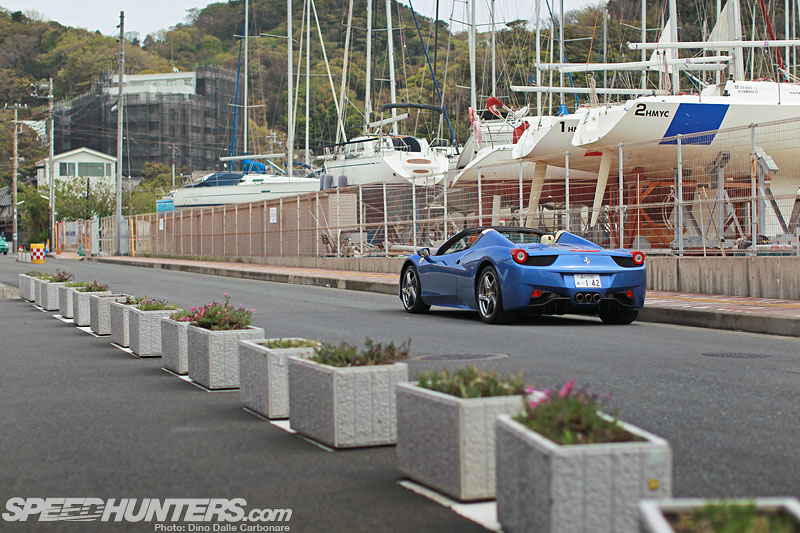
While this was a nice location it was just not going to cut it for the main bulk of the photography that I had in mind. So with the intention to search for something more suitable, somewhere less cluttered to immortalize the Spider against…
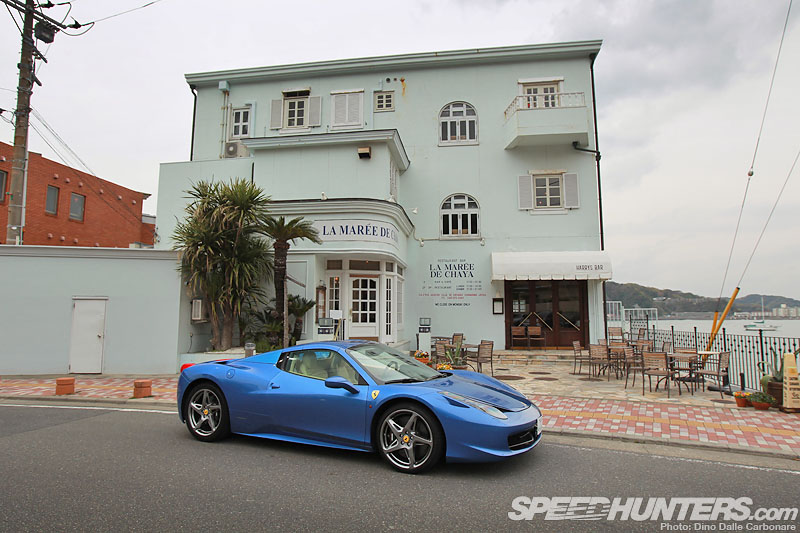
… we thought we might as well stop for a spot of lunch first. We chose La Marée de Chaya, a nice little French restaurant from which you can enjoy an awesome view of the bay while munching down on some gourmet sandwiches.
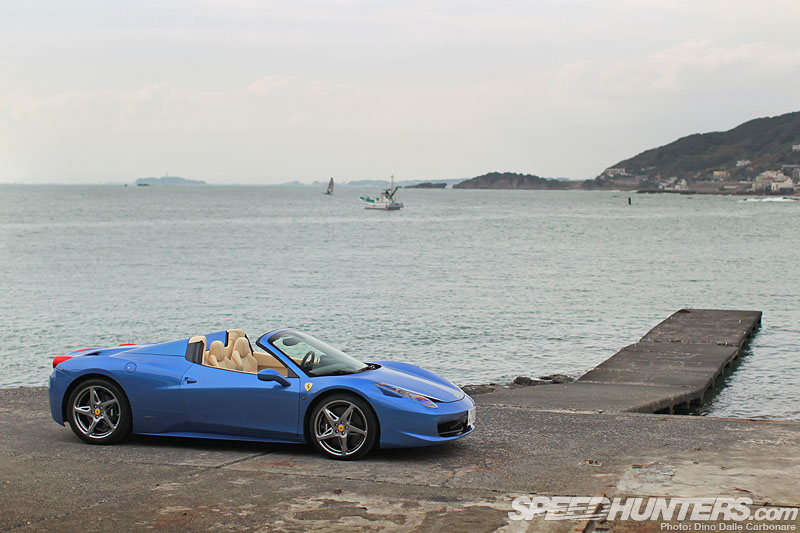
With our energies replenished it was back on the road and by pure coincidence I ended up finding this little semi-abandoned spot right on the water. It was just what I was looking for and with camera bags taken out of the ‘frunk’ (isn’t that what you call a front trunk?), I got busy.
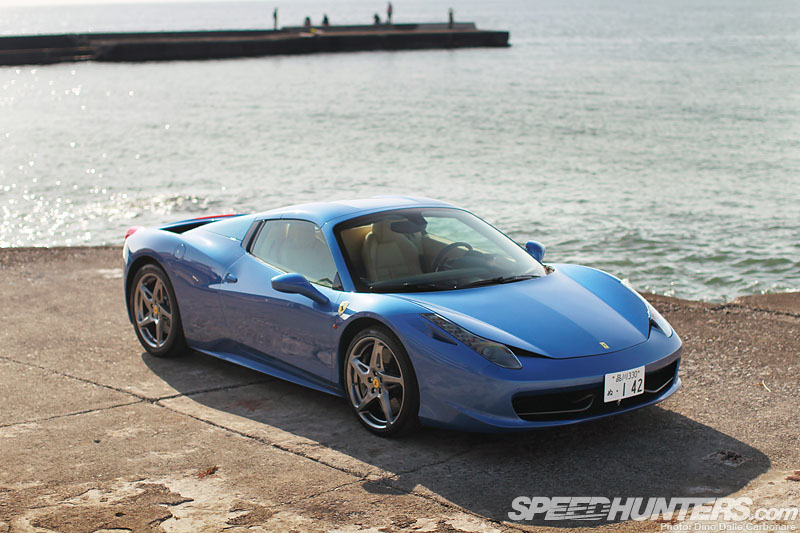
Ever since the Dino 246GT the evolution of mid-engined Ferraris has been an interesting one to follow. The cars that have come since that initial V6-powered model have come to define the brand just as much as the big front-engined V12 models ever did. That said however, the jump from F430 to 458 can pretty much be considered a reinvention rather than an evolutionary step. Penned by Pininfarina the Italia and this Spider versions embody the essence of the last two-decades-worth of mid-engined Ferraris, all the way from the F355, the 360 Modena and then the F430.
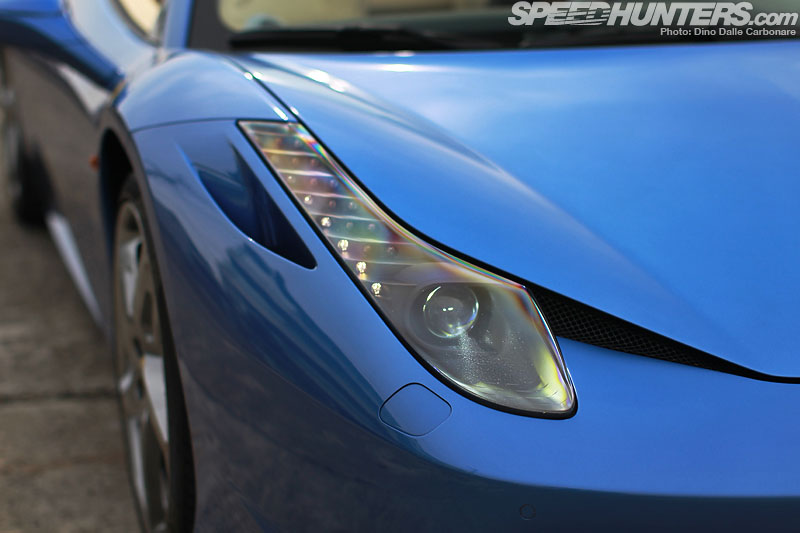
It couples the qualities of each into a vastly futuristic interpretation, instantly recognizable out on the street thanks to that shark-like low slung front end and elongated projectors.
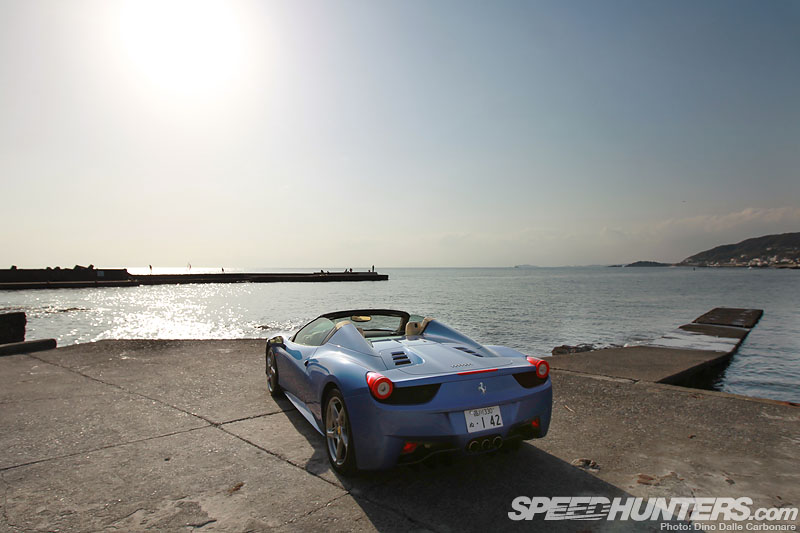
There’s an evident fusion of simplicity and aggressiveness, beautifully executed in a way that only Ferrari really knows how.
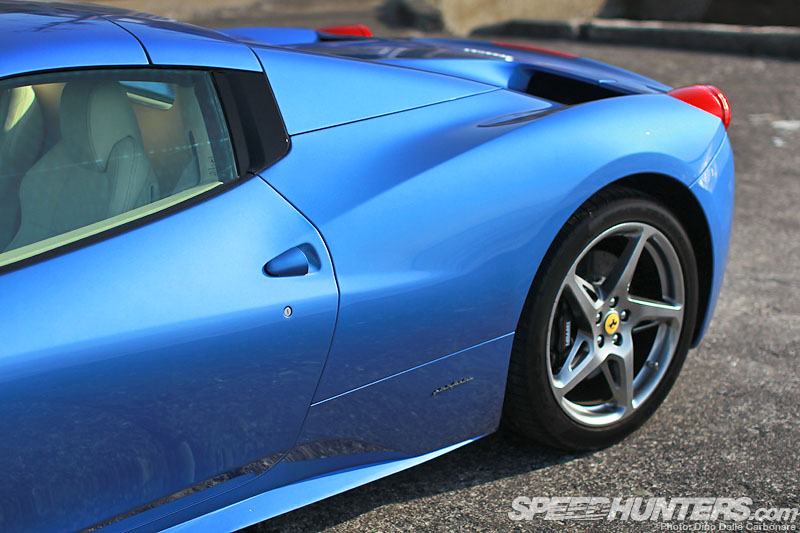
The Spider even much more so than the coupe version is testament to this, the way the folding hardtop disappears under those rear cowls…
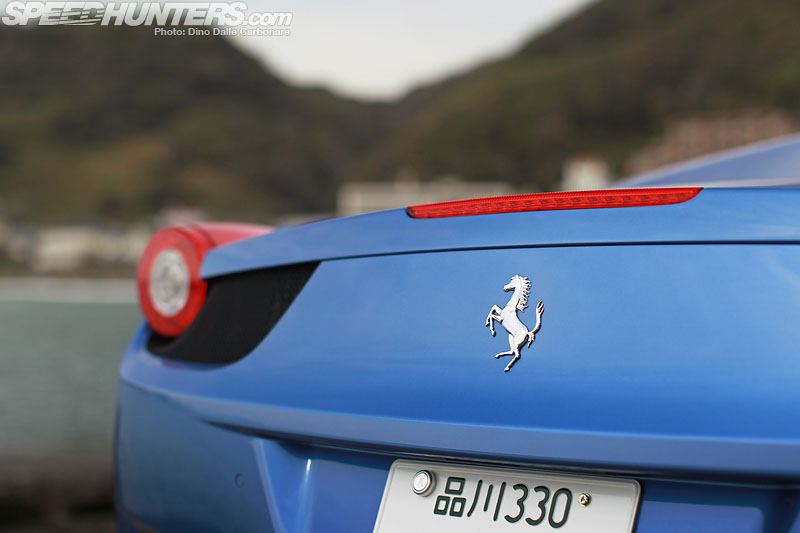
… leaving what is probably an even more beautifully flowing rear end…
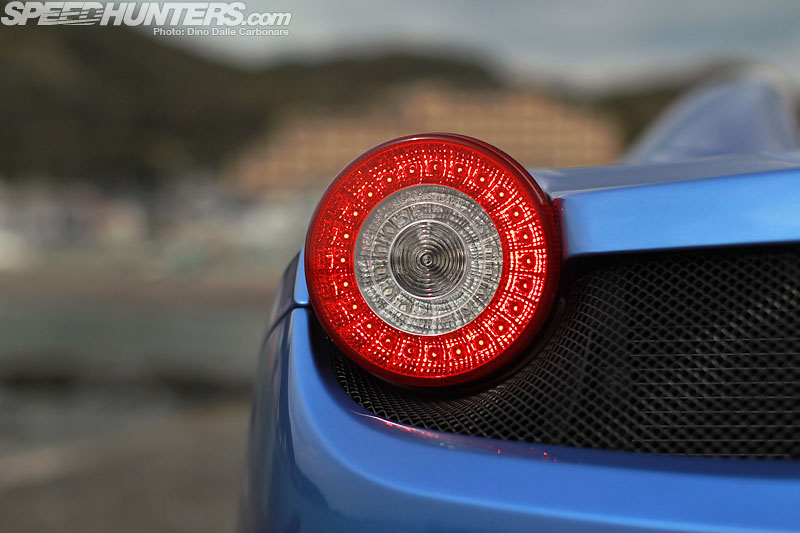
… onto which Enzo-like round LED taillights virtually stick up out of the bodywork. Coupled to this simplicity the 458 is all about function and stunning packaging…
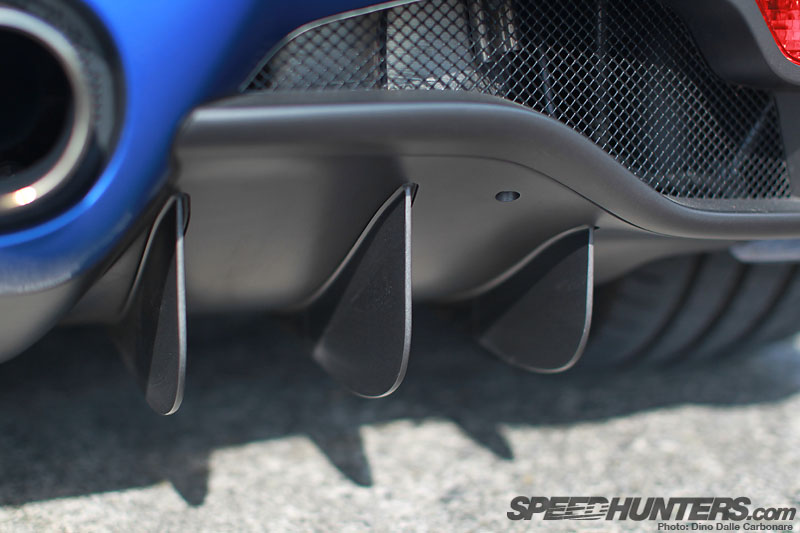
…. something you can see if you are willing to get down on your knees and take a closer look at the flat floor and rear diffuser section which helps keep the car glued to the road at speed without the aid of spoilers or wings.
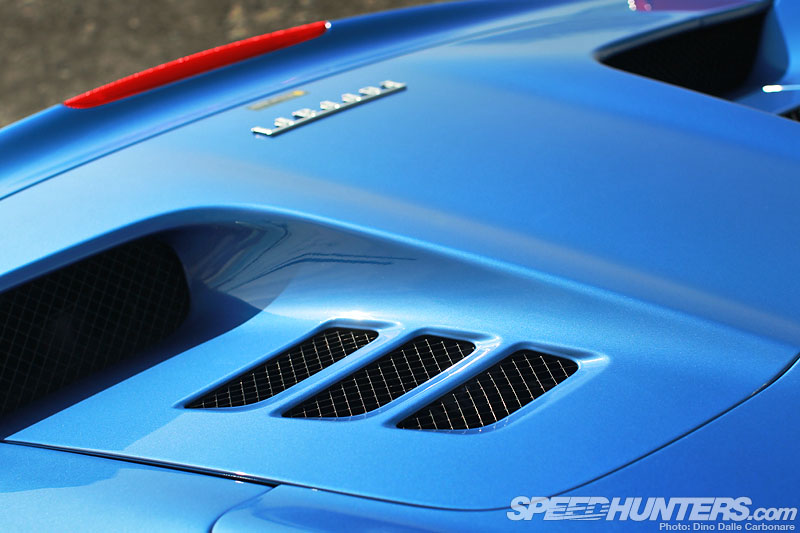
The only thing the Spider really lacks is the visible red inlet manifolds that can be seen through the hatch glass on the coupé, it’s probably the only real negative aspect one can attribute to the drop top version of the Italia but then again you just have to pop the engine cover…
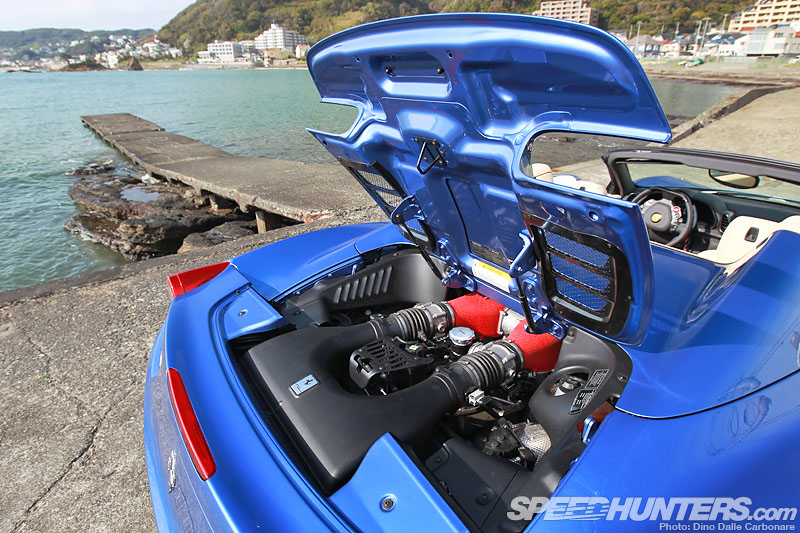
… and lift it up to expose the V8 beneath. See what I mean when I say it’s a bit of a packaging masterpiece?
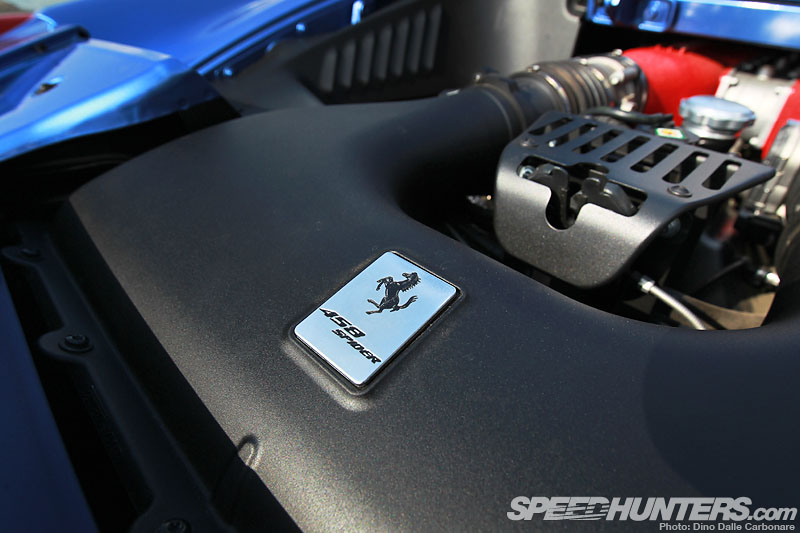
The best way I can describe the 458? An engine with a car wrapped around it. It’s all about the engine. Like the bright red coloring of its intake manifolds and head covers, this is very much the heart of the car – the heart of the Ferrari experience.
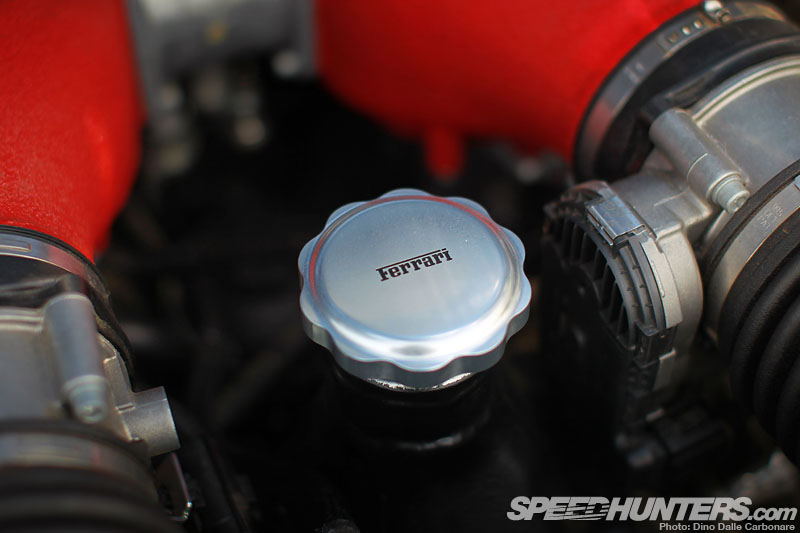
Think about the numbers: 562hp right up at the 9,000rpm redline and just under 400 lb/ft peaking at 6,000 rpm all delivered through an lightning fast dual-clutch transmission. That’s 125hp per liter. On paper it probably sounds peaky – frenetic even – and that’s pretty much what it’s like if you are pushing at ten tenths. But in the reality of day to day driving the 4,499 cc V8 is one of the best engines I’ve had the pleasure of sampling. Through direct injection, variable valve timing, a high 12.5:1 compression ratio and state-of-the-art engine management the dry-sumped, flat-plane crank motor is able to deliver 80 percent of its torque at 3,250 rpm, meaning that no matter at what point you may find yourself in the rev-range, the V8 will always delivers immediate acceleration with the sort of instant throttle response modern day turbocharged engines can only dream of. And speed is what it’s all about. The way the Getrag transmission swaps cogs either up or down its seven speeds is a perfect match to – and a necessity for – the engine’s overall character.
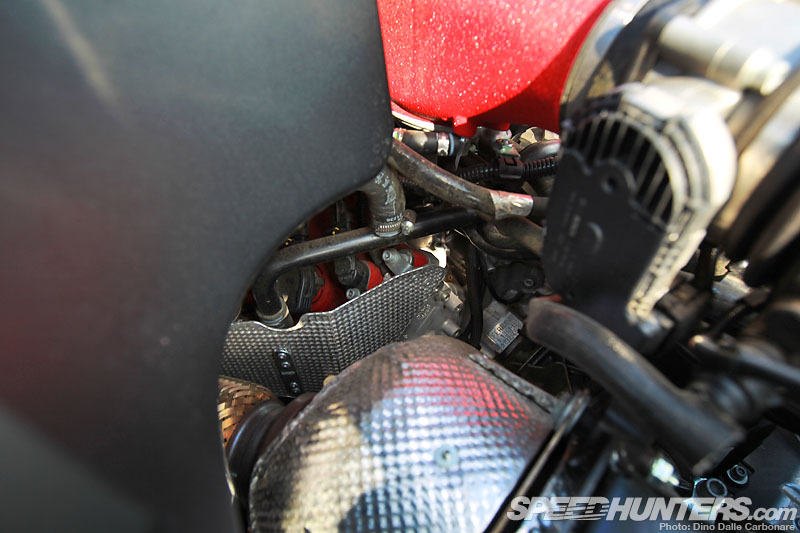
There isn’t much that you can actually see of the V8 in the Spider – the 90-degree motor sitting so low in the chassis all you get is a glimpse of the rear corners of the head covers. And it’s good it’s located there because it translates in a low center of gravity helping to make the 458 – with its 42 percent front and 58 percent rear weight distribution – a very natural car to steer, and almost neutral in the way it interacts with the road beneath it.
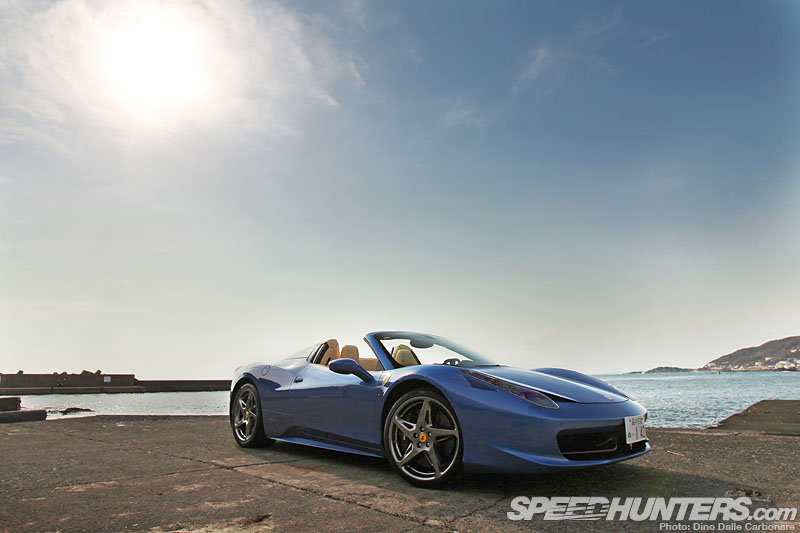
It is the crème de la crème of modern day supercars and the Spider adds even more to the overall experience…
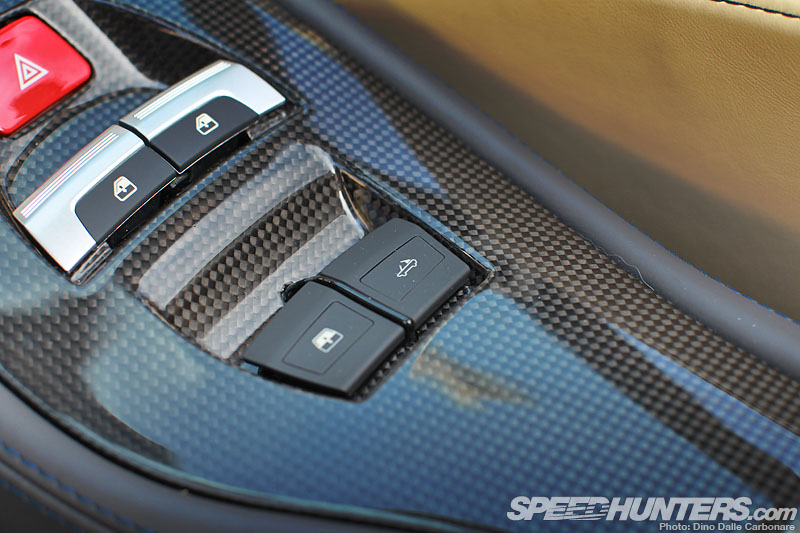
… by a simple press (well you have to hold it down/pull it up actually) button.
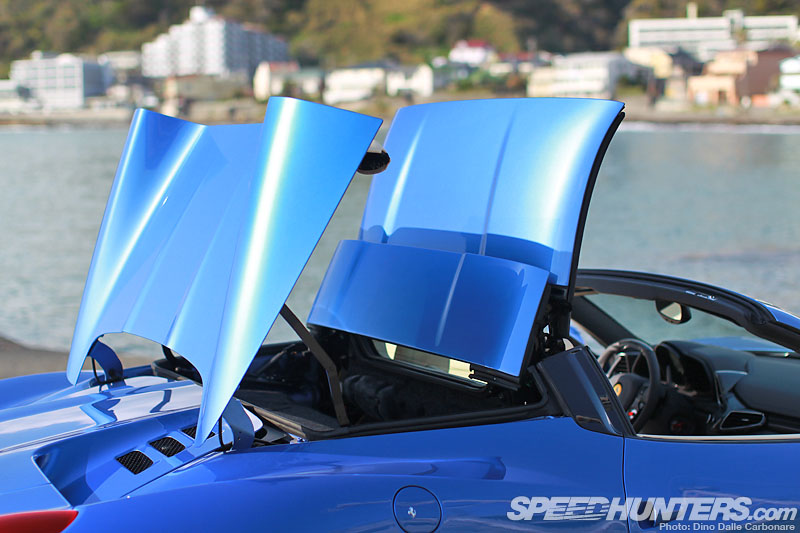
It takes just 14 seconds for the two-piece metal roof to fold away backwards…
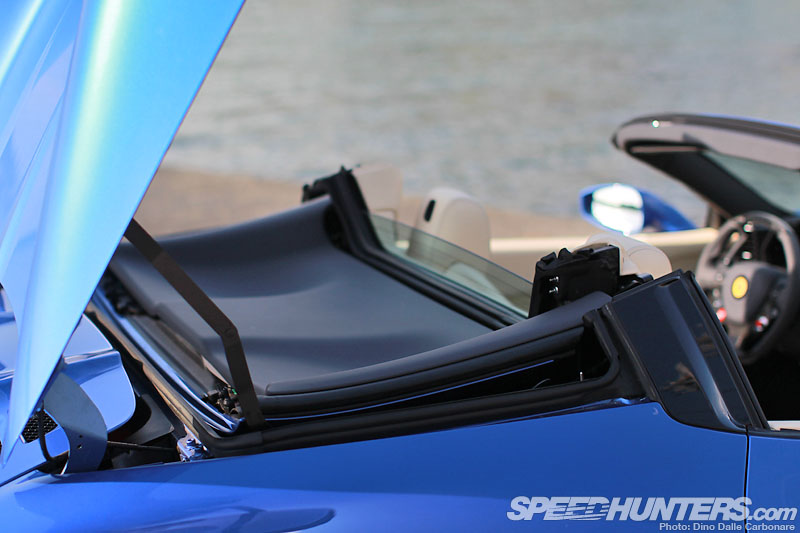
… into the little space under the cowled rear cover.

It’s a beautiful and elegant series of movements and you never tire of looking at the process literally unfold before your eyes.
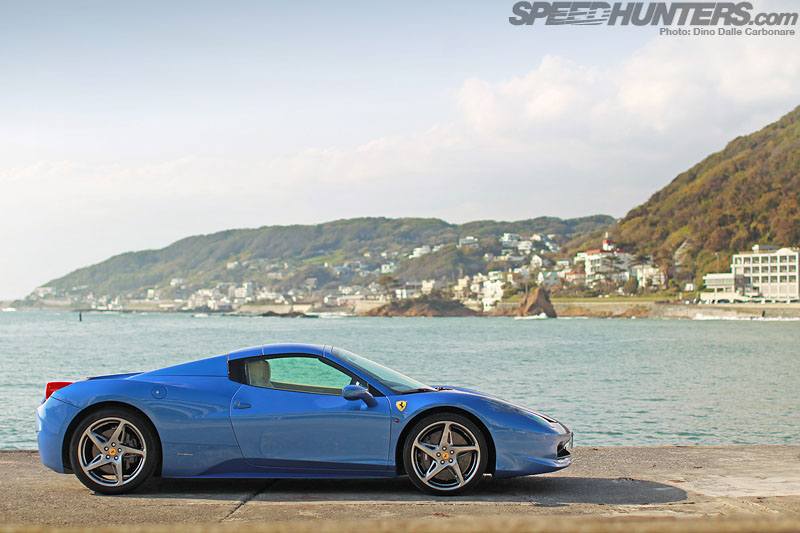
So what you have here is pretty much a coupé that transforms into a Spider, offering the best of two worlds. The Spider looks so damn good even with the roof up. Place a coupé next to it an I’d have a very tough time choosing my favorite!
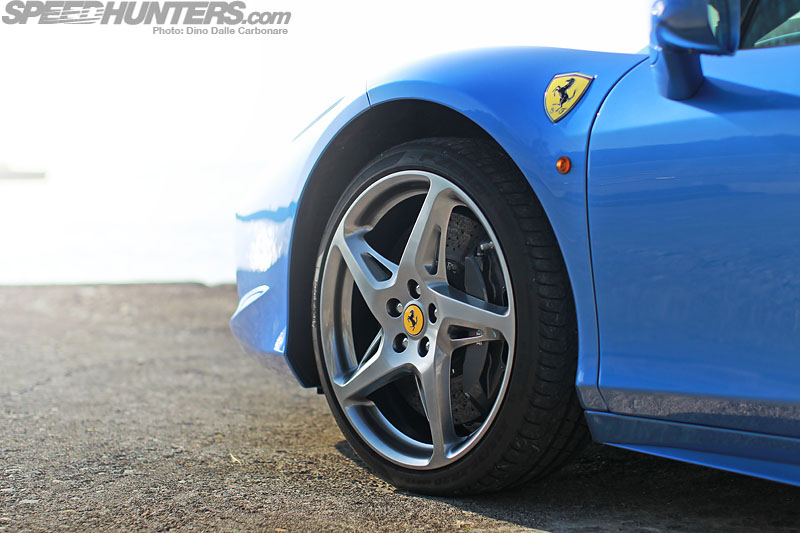
Evolution also applies to the wheels. The five-spoke Ferrari design rim has over the years boasted so many intricate interpretations. The Spider rode on optional 20-inch wheels all round – 8.5J up front and 10.5J at the rear. The Pirelli P-Zero tires measure 235/35 at the front with chunkier 295/35 at the rear where all that power needs to be efficiently transmitted to the ground.
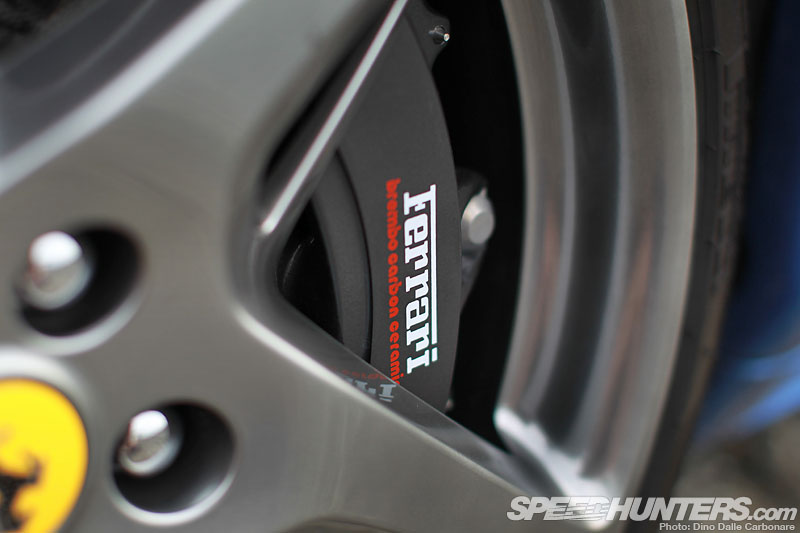
Unlike some performance cars I’ve driven this year which were at best ‘scary’ in the brakes department, Ferrari certainly cuts no corners here. The Spider was fitted with Brembo monoblock calipers – six pots at the front and four pots at the rear…
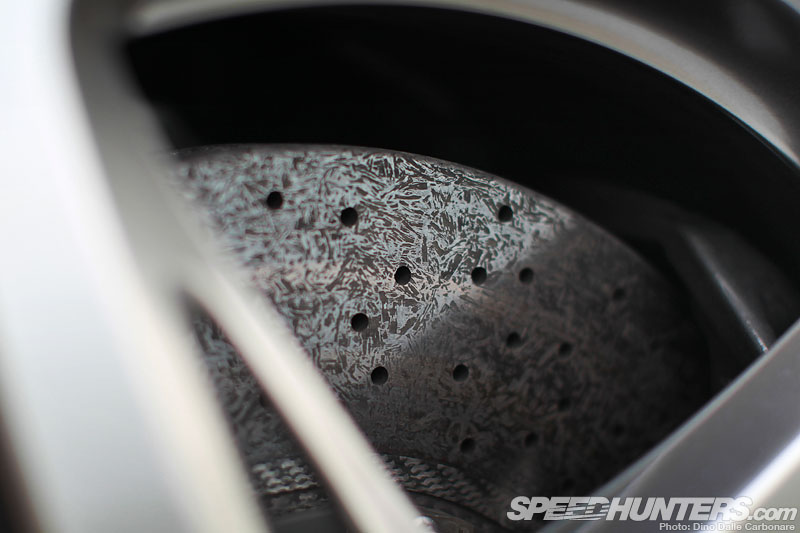
… working in conjunction with carbon ceramic discs measuring a massive 398 mm diameter fore, and 360 mm aft. These have no problems hauling the 1535kg Spider down from speed repeatedly, and in the process offering a very progressive pedal feel with lots of feedback. Like all these systems you have to watch out from cold, as they do need some time to warm up properly in traffic.
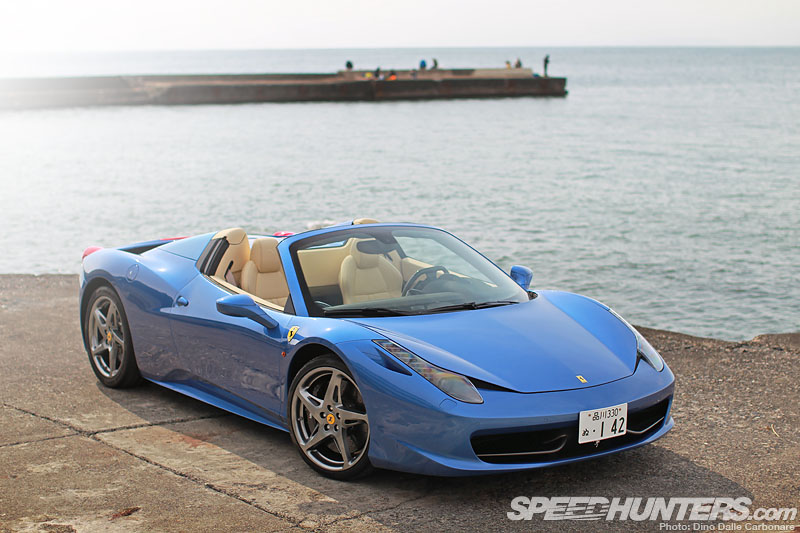
The Spider rides on adaptive suspension and it’s yet another aspect of the car that impressed. Ferrari has managed to extract suppleness out of a firm setting, and in Sport mode the dampers effortlessly absorb imperfections without any problem. In the more focused driving modes the damping tightens and the whole chassis becomes far more responsive and precise – so much so that it’s virtually impossible to really tap into its limits on normal roads. The 458 is one car I’d love to experience on a track!
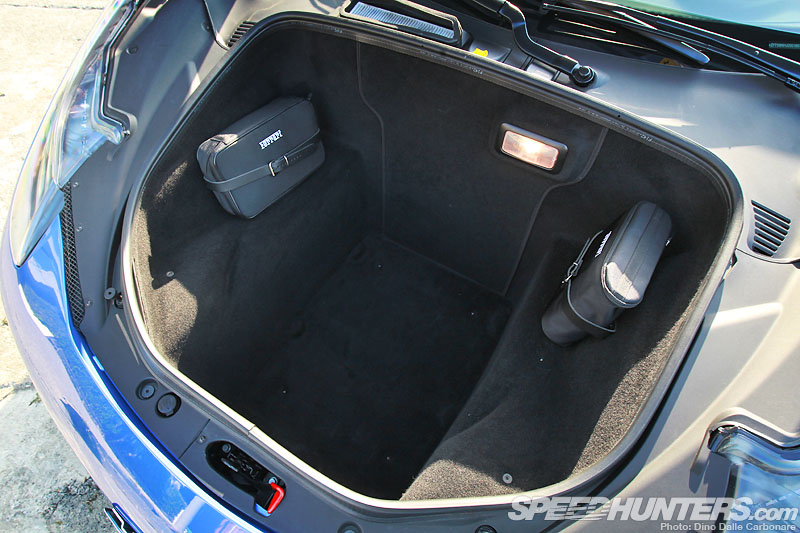
While you aren’t going to be hauling a lot of stuff around with a 458, there is a decently sized trunk up front that will swallow up a decent amount of baggage. Potential owners of these sort of cars always look for enough space for an overnight couple of bags for a quick weekend getaway and there is plenty of volume in there for that sort of thing.
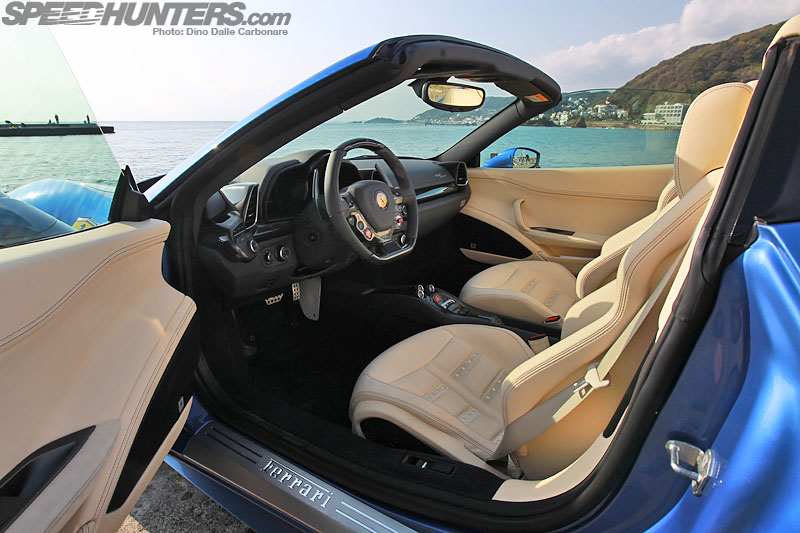
And so we get to the interior – a place I absolutely fell in love with during my three days with the 458 Spider. It is a very nice place to be in – you sit low and slung back and the driver seat allows for lots of adjustments to get even the thicker gentlemen to find his optimal driving position.
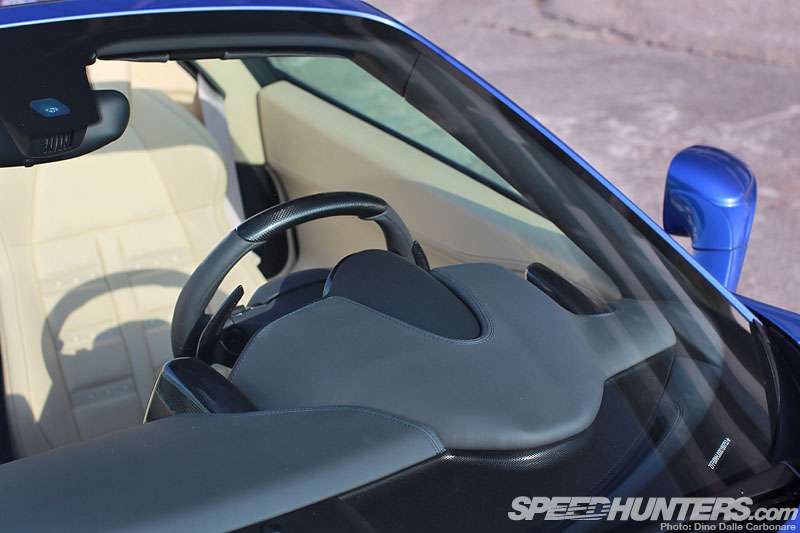
It’s the whole dash interface that really stood out however.
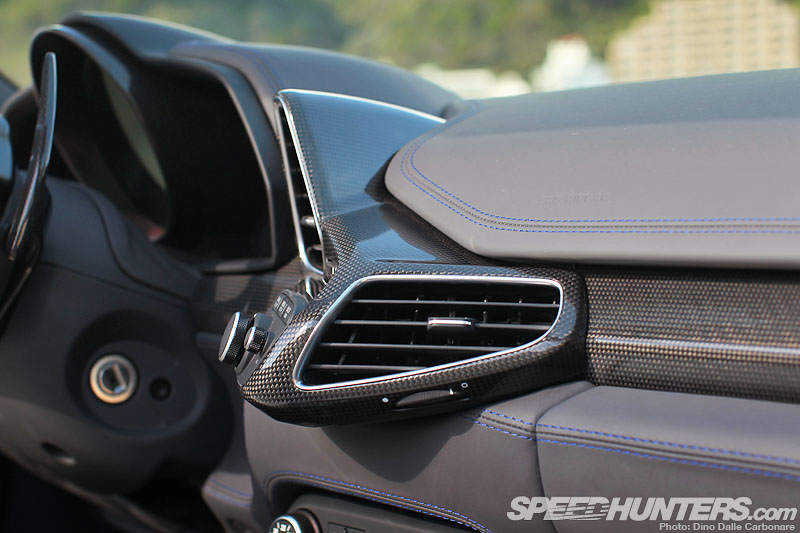
It’s almost organic in layout, with the driver at the center of if all, cocooned in a beautiful symmetry of shapes and commands.
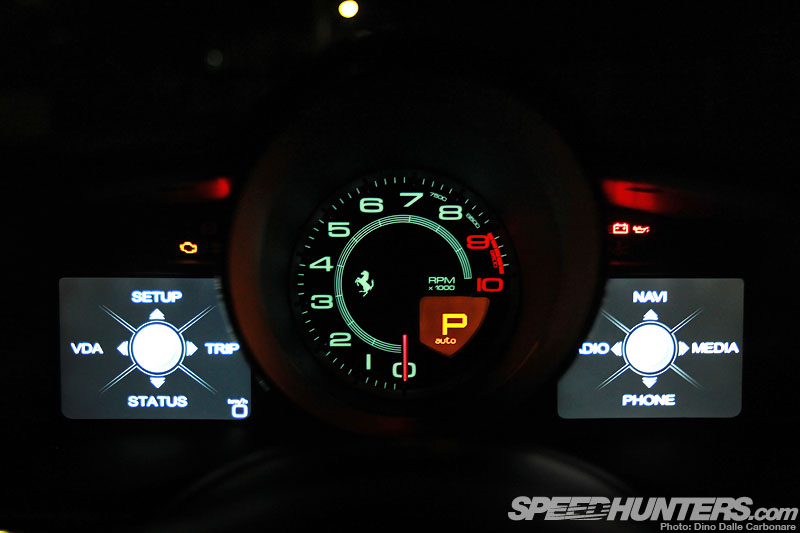
The two LCD screens on either side of the big center tachometer…
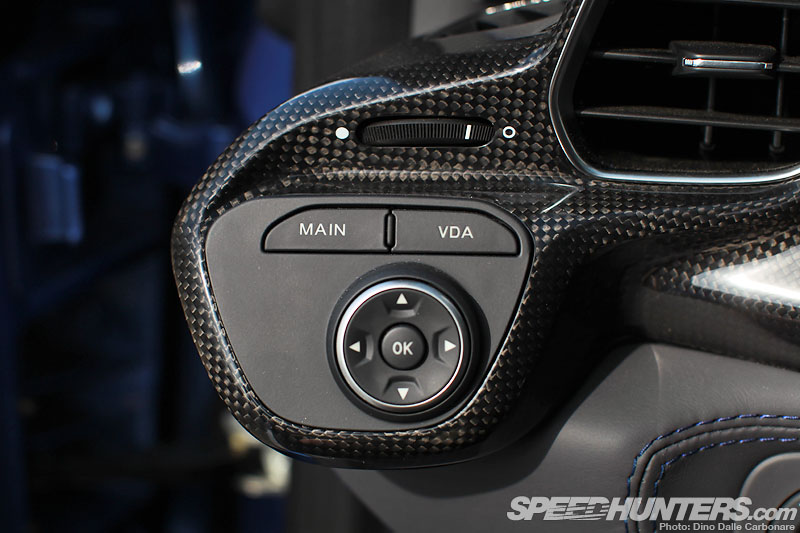
… each get their own controls. It takes no time at all to get a feel for it – it’s so beautifully intuitive.
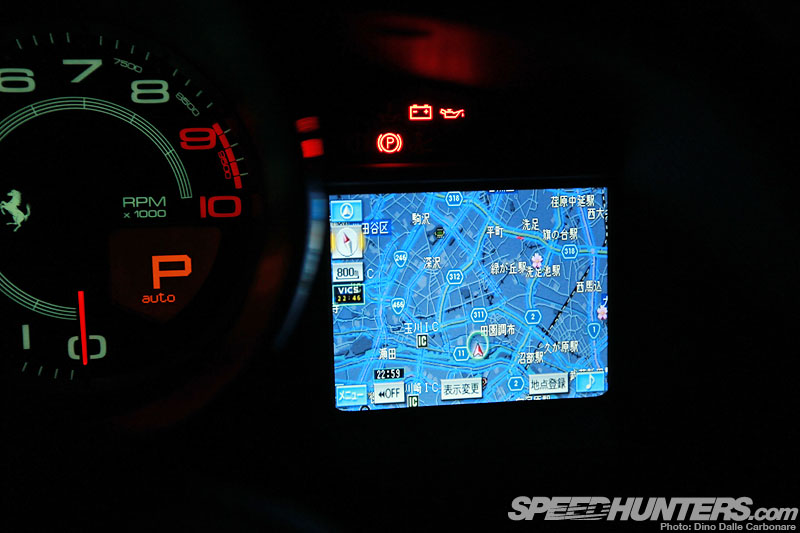
The right-hand screen caters to the entertainment and navigations side of things where you can take a glance at the map or set a destination, or flick through the music on either the built in HDD and CD player, or access your tunes directly on your phone or iPod.
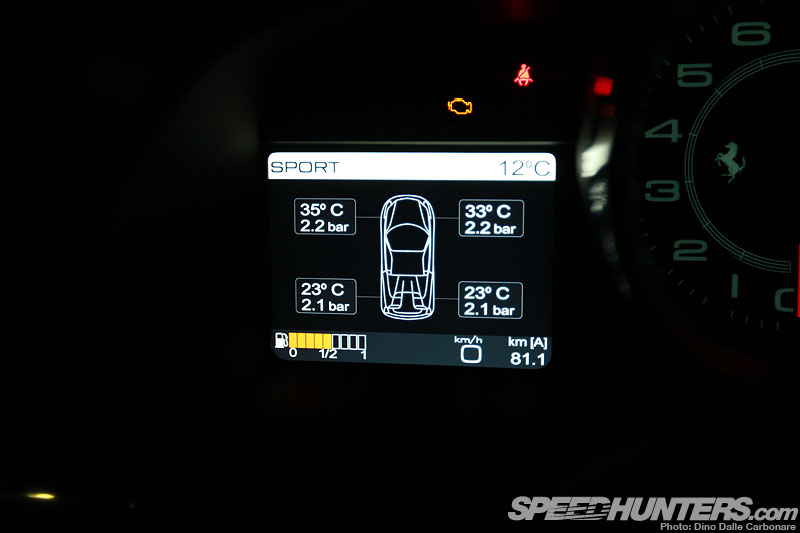
The left screen is for serious business. Here – when you move away from the regular speedometer or trip computer display – you can access more sport-oriented graphical interfaces like the tire pressure and temperature monitor…
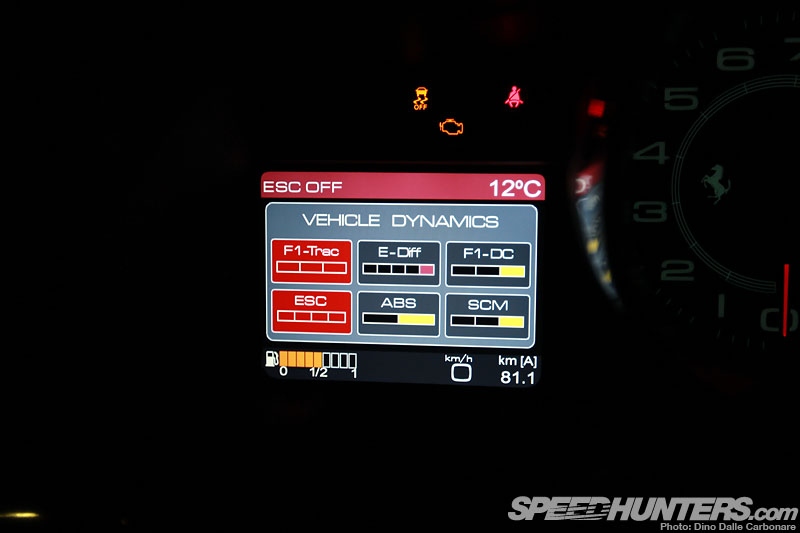
… and get feedback from the various settings of the Manettino, showing what each one does to things like the E-diff, ABS, stability control, traction control and so on.
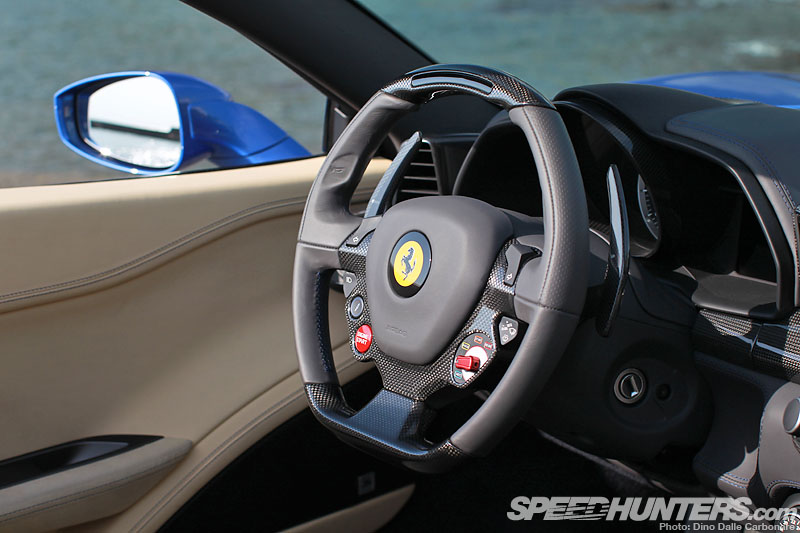
Everything happens on the steering wheel, so your hands never really have to move. If you are scared by evolution and technology then it may not be for you, but if you approach things with an open mind, you and the 458 steering wheel will get along like best friends. The Spider press car was fitted with the optional LED display on the carbon fiber wheel, lighting up as RPM rises to help your peripheral vision pick up when you should be reaching for that upshift. Trust me, when you have a fast revving engine that works its way to a 9,000rpm redline in a blink of an eye, this is a little gadget you will want to have.
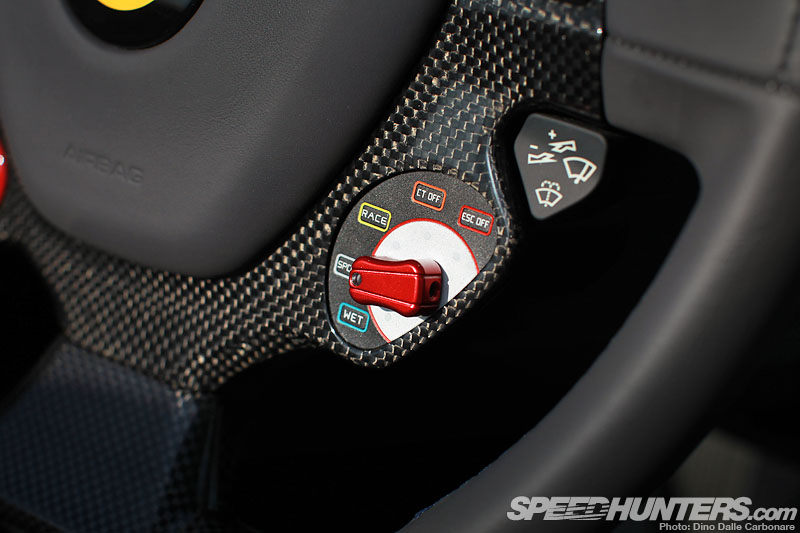
I’ve mentioned it twice already, but here it is, (a new and improved version of) the Manettino. At the end of the day it’s like the various M-Sport setting you will access in say a BMW M car, except it’s all laid out and presented to you in an impossibly-Italian way. No boring black plastic buttons here – you twist the aluminum switch into your desired position and allow yourself to be impressed (or scared) each click of the way. In Sport mode the 458 is in its day-to-day setting, Race is for when you want to play a little on nice roads or at the track, the throttle sharpens and the valves in the exhausts open earlier, the adaptive suspension firms up, and the traction and stability controls let the car move around a little. The CT off cuts traction control, and the last ESC Off setting cuts all controls except ABS and electronic brake distribution.
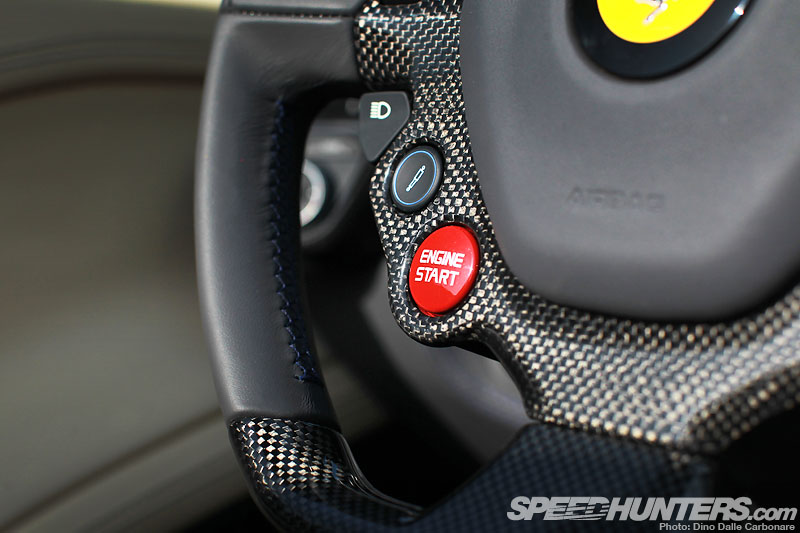
On the other side of the wheel you will find the engine start button, the switch for the lights and a button to soften the suspension if you happen to be driving over particularly bad surfaces.
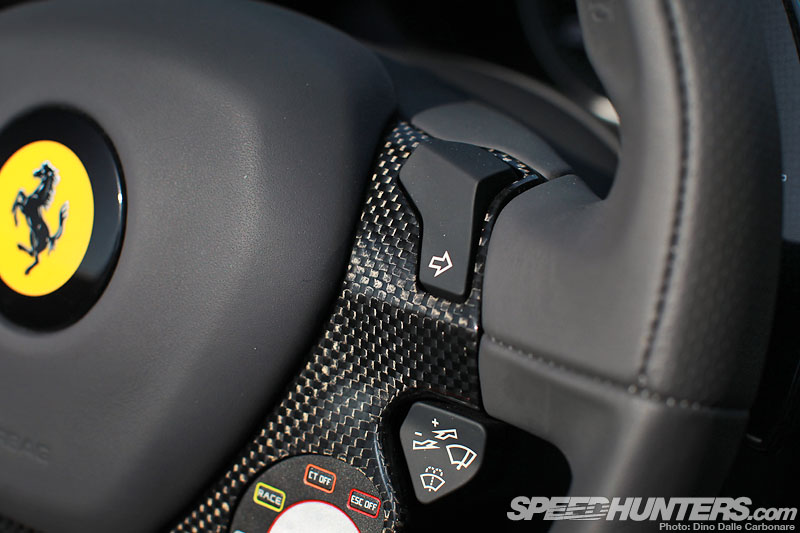
Even the indicators and the wipers are controlled from the steering wheel. Everything is at your finger tips, so unless you have trouble controlling your fingers you will find this wheel quite a pleasure to use.
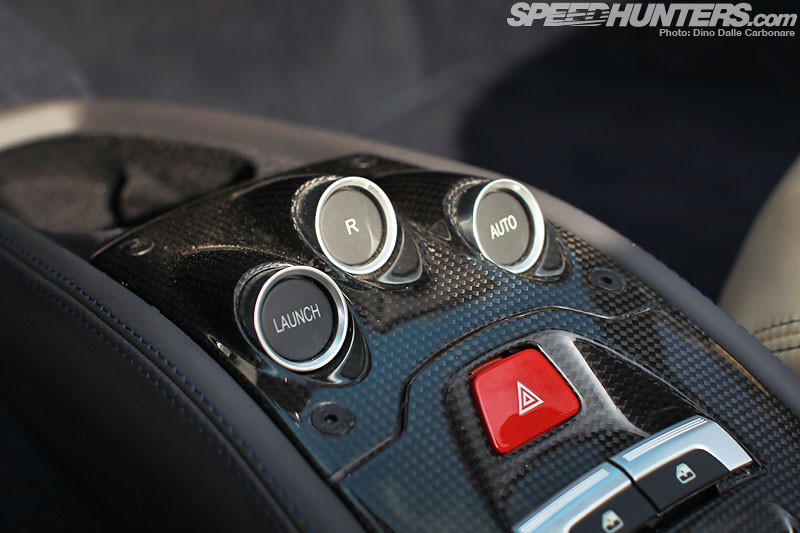
Aside from the electric windows switches The low slung carbon fiber trimmed console (the carbon is all optional) has three more buttons – one to engage reverse, the other to switch the transmission into Auto mode, and the last – the Launch button – is guaranteed to put a rather large smile on your face.
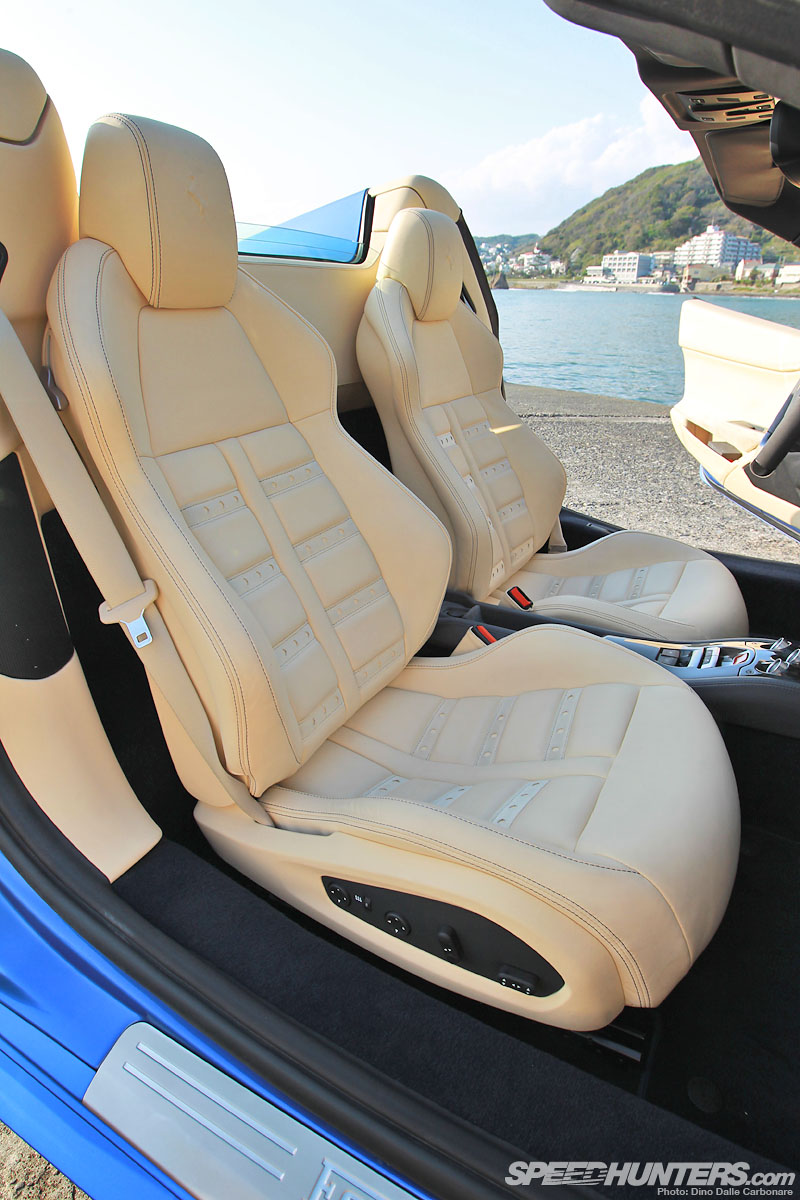
The Spider came with the optional Daytona seats, upholstered in soft cream leather with optional blue stitching and perforated Alcantara strips along the seat and backrest.
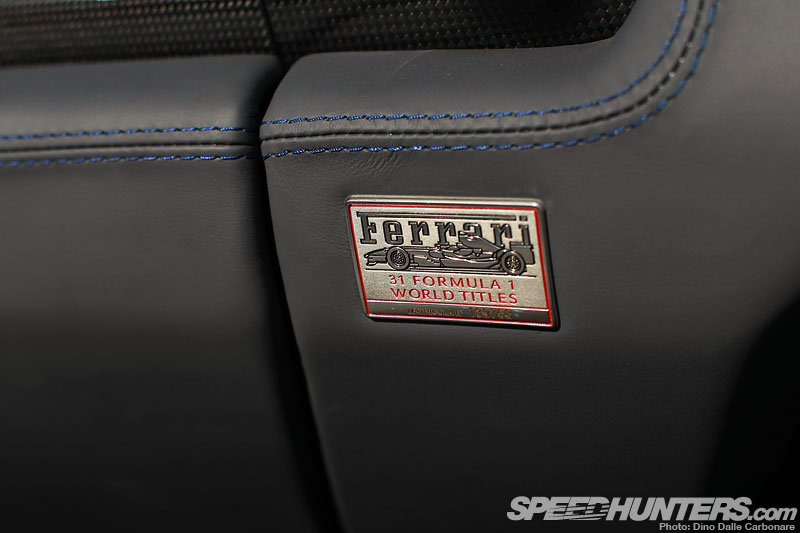
As far as Dream Drives go, this has to be my most memorable. It didn’t take me long, but I get the whole Ferrari thing. No matter how many cars you drive and how impressed you may be by their capabilities, jumping in a Ferrari messes with your senses. You are bombarded by top-level performance delivered in such an emotional fashion that it’s impossible not to fall for it. Your heart goes first, but your mind will soon follow.
Many thanks to the awesome people at Ferrari Japan for the opportunity to get behind the wheel of this incredible car.
Dino Dalle Carbonare
Instagram: speedhunters_dino
The Ferrari F40 LM on Speedhunters
Ferrari Racing Days 2013 in Japan on Speedhunters






